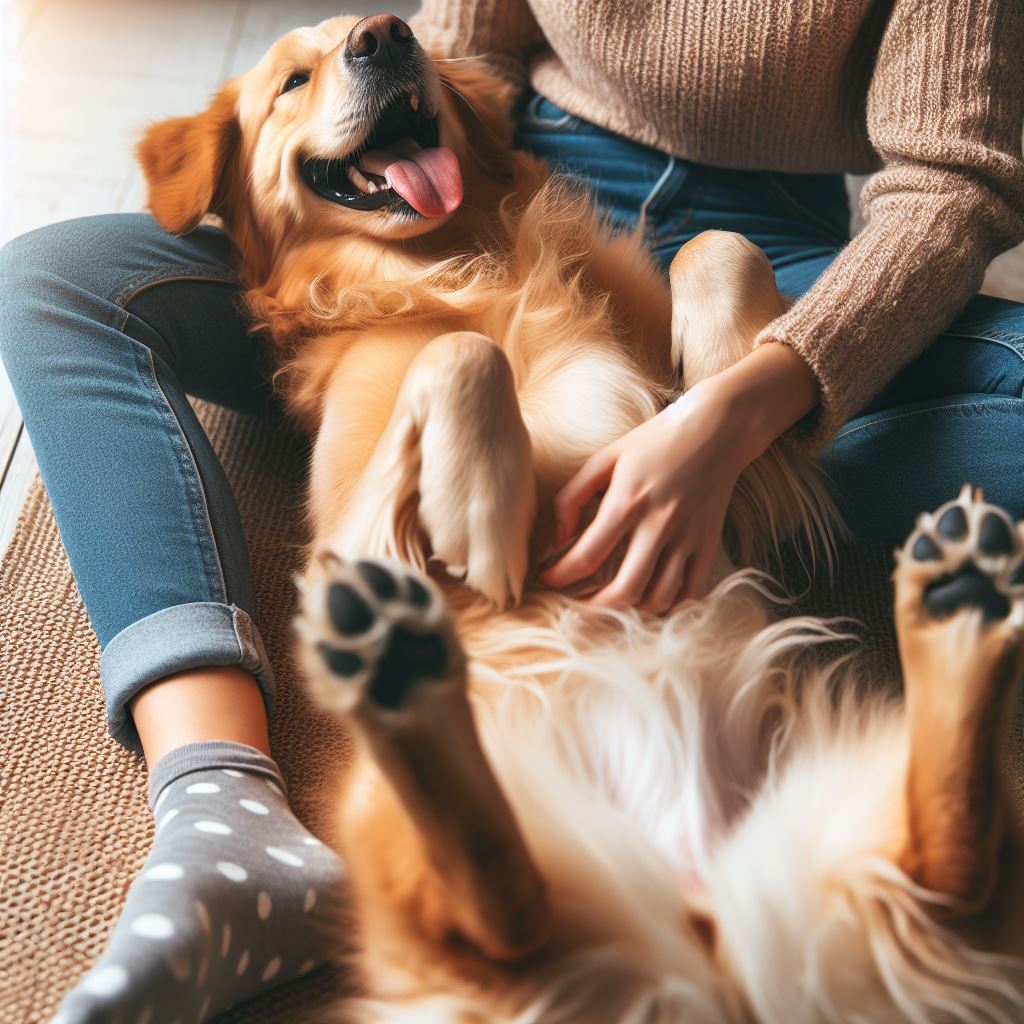Tickling can be an amusing way to interact with humans, but when it comes to our furry friends, the rules change. Dogs have a unique perception of tickling, influenced by their anatomy and social cues. Understanding how dogs interpret tickling can help strengthen the bond between you and your dog companion.

Doggy Perception of Tickling:
- Sensitive Areas: Dogs possess sensitive spots on their bodies, such as the belly, paws, and ears. While gentle petting in these regions might be enjoyable, the sensation of tickling can be surprising or even irritating for them.
- Laughter Misinterpretation: Dogs don’t comprehend laughter in the same way humans do. Your chuckles during tickling sessions might confuse or distress them rather than evoke joy.
Signs Your Dog Might Not Enjoy Tickling:
- Body Language: Pay attention to your dog’s body language. Flattened ears, a tucked tail, a whale eye (showing whites of the eyes), or growling can indicate discomfort.
- Attempting to Escape: If your dog squirms, attempts to bite, or excessively licks their lips during tickling, they might be signaling their desire for you to stop.
Alternatives to Tickling:
- Gentle Scratches: Most dogs appreciate gentle scratches behind the ears, on the chest, or at the base of the tail.
- Belly Rubs (with Caution): While some dogs enjoy belly rubs, approach with caution and respect their cues.
- Interactive Play: Engage in activities like fetch, tug-of-war, or other interactive games to bond with your dog and provide them with exercise.
So, Can You Tickle a Dog?
- Maybe, very gently: If your dog appears relaxed and open to it, experiment with light petting or scratching in areas they enjoy.
- Focus on Positive Reinforcement: Watch for signs of enjoyment during petting or playtime and reward your dog with treats or praise.
Overall:
While tickling may not be the ideal way to express affection to your dog, numerous alternatives exist to strengthen your bond and create enjoyable experiences together. Pay attention to your dog’s preferences and focus on activities that bring them genuine pleasure. By understanding your dog’s individuality, you can cultivate a deeper connection and enrich both of your lives.
